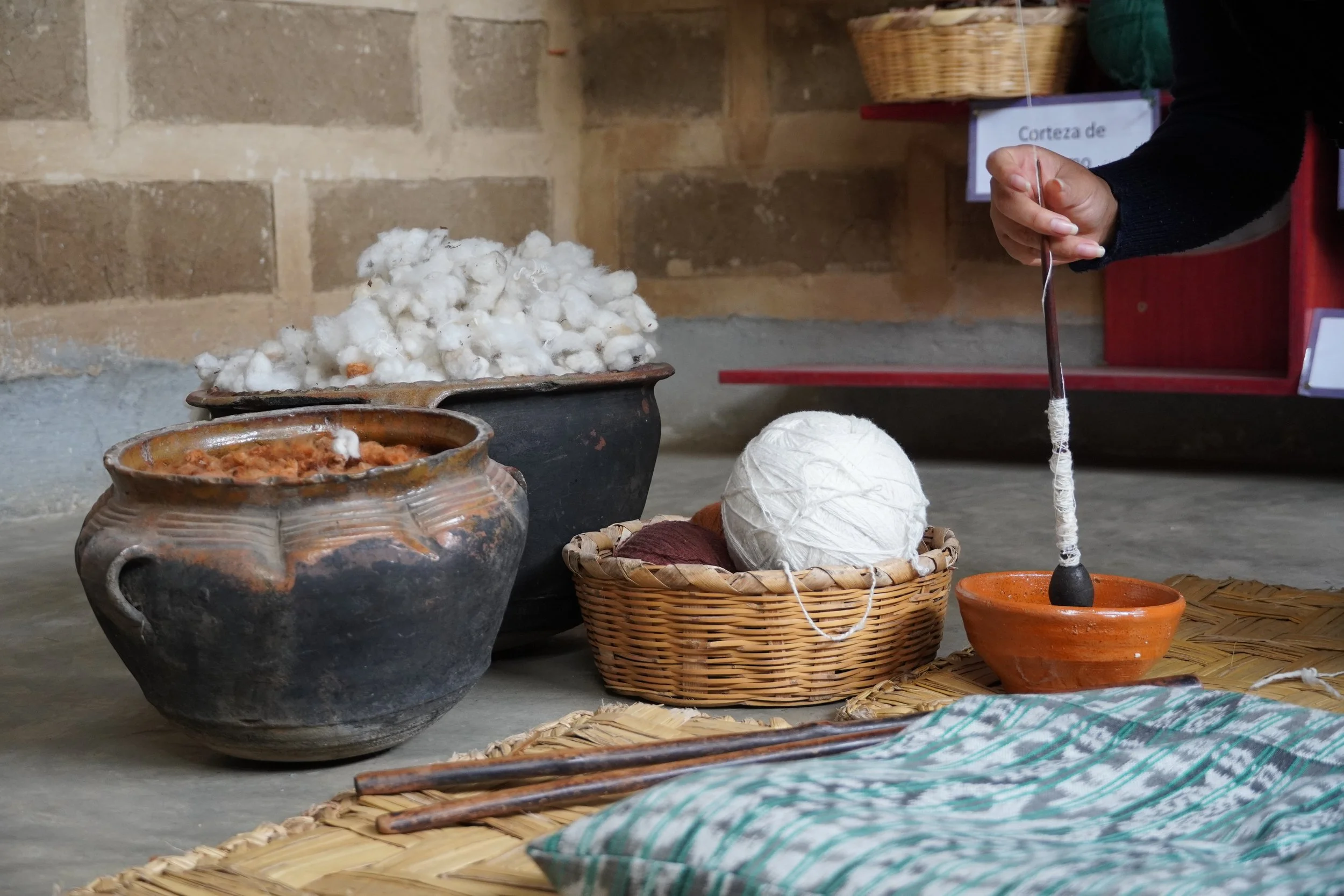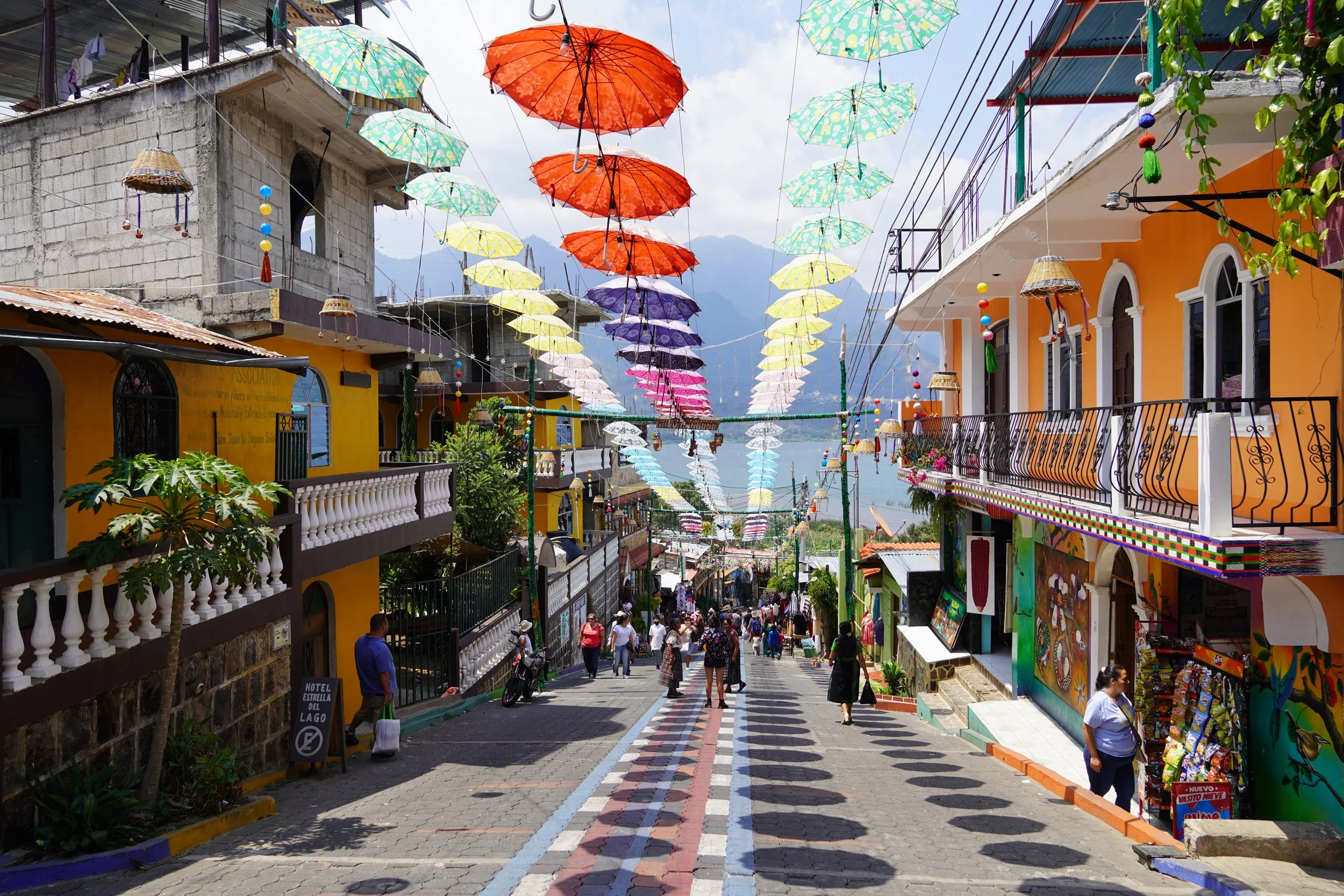Lake Atitlán: A Cultural and Natural Marvel
Nestled amidst the highlands of Guatemala lies a true gem of Central America—Lake Atitlán. Surrounded by towering volcanoes and vibrant Mayan communities, this majestic lake captivates visitors with its breathtaking beauty and rich cultural heritage.
In this Naturally Smart Travel blog, we dive into the history of Lake Atitlán. Read along as we explore its formation, the development of communities around its shores, and its cultural significance to the Mayan civilization and Indigenous communities today.
Join us on a journey through time as we uncover the wonders of Lake Atitlán.
A Natural Wonder
Lake Atitlán, often referred to as the "Jewel of the Highlands," is a volcanic lake situated in the Guatemalan Highlands. Keep reading for a glimpse into the lake's natural splendor.
It’s a geographic marvel that spans an area of approximately 50 square miles. Lake Atitlán is renowned for its mesmerizing beauty. Surrounded by three towering volcanoes—Volcan San Pedro, Volcan Atitlán, and Volcan Toliman—it boasts a picturesque landscape that is often described as paradise on Earth.
The crystal clear waters of Lake Atitlán are a sight to behold. Fed by numerous rivers and streams, the lake's depth reaches up to 1,120 feet (340 meters), making it one of the deepest lakes in Central America.
Formation and Geological History
Lake Atitlán’s formation is intertwined with the geological processes that shaped the region over millions of years. Here's a brief overview!
Lake Atitlán rests within a massive volcanic caldera, formed by a cataclysmic eruption approximately 85,000 years ago. The eruption caused the collapse of a massive volcano, leaving behind a depression that eventually filled with water, forming the lake we know today.
The region surrounding Lake Atitlán is geologically active, with volcanic and tectonic activity continuing to shape the landscape. The volcanoes that encircle the lake are a testament to the dynamic forces that have molded the area over time.
Cultural Significance to the Mayan Civilization and Indigenous Communities
Lake Atitlán holds profound cultural significance for the Mayan civilization and the Indigenous communities that have inhabited its shores for centuries. Below is a very brief overview of its cultural heritage.
Lake Atitlán's origins are intertwined with Mayan civilization, mythology, and history. It is believed that the lake was considered sacred by the ancient Mayans, who revered it as a gateway between the natural and spiritual realms.
Lake Atitlán is surrounded by Indigenous Mayan communities, each with its distinct customs, languages, and traditions. These communities, such as the Tz'utujil, Kaqchikel, and K'iche', have preserved their cultural heritage and continue to celebrate their rich Mayan traditions to this day.
Read more like this: Insights into the Mysteries of Mayan Cosmology
The Indigenous communities around Lake Atitlán are renowned for their intricate textile craftsmanship. Visitors have the opportunity to witness the vibrant traditional clothing adorned by the locals, showcasing their artistic expression and cultural pride.
The tranquil and spiritual ambiance of Lake Atitlán has attracted seekers and travelers in search of self-discovery and personal growth. The lake's serene environment and the wisdom of the indigenous communities offer an ideal setting for spiritual retreats, yoga, and meditation practices.
Read more like this: Semana Santa Celebrations Across Guatemala
Come Visit Lake Atitlán
Lake Atitlán, with its stunning natural beauty, geological history, and cultural significance, is a destination that immerses visitors in the wonders of Guatemala's highlands. Whether you're captivated by its majestic volcanoes, eager to explore the vibrant Mayan communities, or simply seeking an inspirational vacation, you can find it all here!
The impact of tourism on the communities surrounding Lake Atitlán has been both positive and challenging. On the one hand, tourism has brought economic opportunities, job creation, and increased revenue for local businesses.
The influx of visitors has stimulated the growth of hospitality services, restaurants, handicraft markets, and tour operators, providing livelihoods for many community members.
Tourism has also provided a platform for the preservation and promotion of Indigenous cultures and traditions, as visitors engage with local communities and learn about their unique way of life. The exchange of cultural experiences has fostered a deeper appreciation and understanding of the rich Mayan heritage present in the region.
However, the rapid growth of tourism has also presented challenges for the Lake Atitlan communities. The increased demand for resources and infrastructure has put a strain on the delicate ecosystem and the availability of clean water. Issues such as waste management and pollution have emerged, requiring sustainable practices to ensure the long-term preservation of the lake's pristine beauty.
Additionally, the influx of tourism has led to some cultural and economic disparities, as certain communities have benefited more than others. Responsible tourism practices need to be embraced, including community involvement, cultural sensitivity, and environmental conservation, to ensure that the benefits of tourism are distributed equitably and that Lake Atitláns communities can continue to thrive in harmony with their surroundings.
As always, you’re welcome to join us on one of our curated eco-friendly tours. Check out our tours and discover our up and upcoming trips to the Lake Atitlán area and all across Guatemala!
Sources
For the history and geography of Lake Atitlán:
"The Geology of Lake Atitlán" by Brian Kreiter, Lake Atitlán Guide
"Geological History of Lake Atitlán" by John Tylander, Atitlan.com
For the cultural significance and impact of tourism on Lake Atitlán communities:
"Cultural Tourism: The Case of Lake Atitlán, Guatemala" by Lucia Ruedenberg, Ethnologies
"Community-Based Tourism and Indigenous Entrepreneurship: The Case of Santiago Atitlán, Guatemala" by Emily Potter and Pablo Morales, Journal of Sustainable Tourism
-
Spanish is the official language of Guatemala. Spanish is spoken by 93% of the population, and is the dominant language used in government, education, and business. There are 24 different languages, many of which are Mayan-based, including Q’eqchi’, Kaqchikel, Tz’utujil, and K’iche’, that are spoken in indigenous communities.
Many people who work in tourism speak English as a second or third language. However, learning a few basic Spanish phrases will go a long way and enhance your experience while traveling in Guatemala.
-
The capital of Guatemala is Guatemala City. It’s located in the southwestern part of the country and is the largest city in Central America. Guatemala City’s population is over two million people, and it’s where the La Aurora International Airport is located.
-
The population of Guatemala is approximately 17 million people, making it the most populous country in Central America. The country’s diverse population is made up of a vibrant cultural tapestry of indigenous Mayan communities, mestizos, and people of European descent.
*This post may contain affiliate links. If you book through them, we may earn a commission at no extra cost to you.










